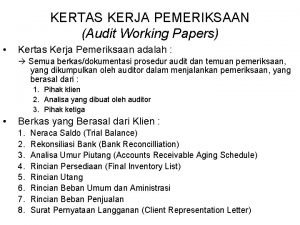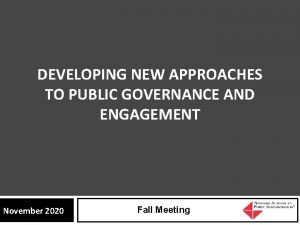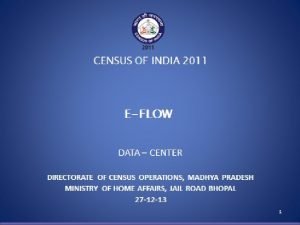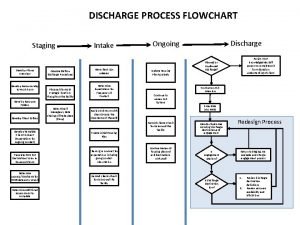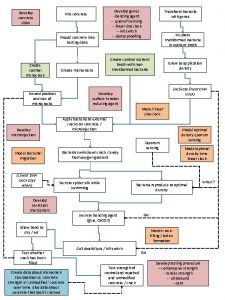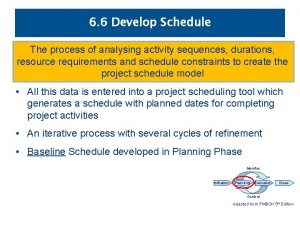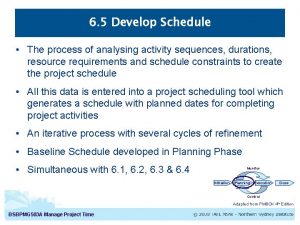LECTURE 9 DEVELOP SCHEDULE Develop Schedule is the



















































- Slides: 51

LECTURE 9 DEVELOP SCHEDULE

• Develop Schedule is the Process of analyzing activity sequences, durations, resource requirements, and schedule constraints to create the project schedule model. • The key benefit of this process is that by entering schedule activities, durations, resource availabilities, and logical relationships into the scheduling tool, it generates a schedule model with planned dates for completing project activities. .

Develop Schedule PROCESS OF ANALYZING ACTIVITY SEQUENCES, DURATIONS, RESOURCE REQUIREMENTS, AND SCHEDULE CONSTRAINTS TO CREATE THE PROJECT SCHEDULE MODEL. 1 2 Inputs Tools and Techniques 1. Schedule Management Plan 2. Activity List 3. Activity Attributes 4. Project Schedule Network Diagrams 5. Activity Resource Requirements 6. Resource Calendars 7. Activity Duration Estimates 8. Project Scope Statement 9. Risk Register 10. Project Staff assignments 11. Resource Breakdown Structure 1. Schedule Network Analysis 2. Critical Path Method 3. Critical Chain Method 4. Resource Optimization Techniques 5. Modeling Techniques 6. Leads and Lags 7. Schedule Compression 8. Scheduling Tools 3 Outputs 1. Schedule Baseline 2. Project Schedule 3. Schedule Data 4. Project Calendars 5. Project Management Plan updates 6. Project Documents Updates ______


INPUTS § § § § Schedule Management Plan Activity List Activity Attributes Project Schedule Network Diagrams Activity Resource Requirements Resource Calendars Activity Duration Estimates Project Scope Statement Risk Register Project Staff Assignments Resource Breakdown Structure Enterprise Environmental Factors Organizational Process Assets

INPUTS 6. 6. 1. 1 Schedule Management Plan

INPUTS 6. 6. 1. 2 Activity List

INPUTS 6. 6. 1. 3 Activity Attributes

INPUTS 6. 6. 1. 4 Project Schedule Network Diagrams

INPUTS 6. 6. 1. 5 Activity Resource Requirements

INPUTS 6. 6. 1. 6 Resource Calendars

INPUTS 6. 6. 1. 7 Activity Duration Estimates

INPUTS 6. 6. 1. 8 Project Scope Statement

INPUTS 6. 6. 1. 9 Risk Register

INPUTS 6. 6. 1. 10 Project Staff Assignments

INPUTS 6. 6. 1. 11 Resource Breakdown Structure

INPUTS 6. 6. 1. 12 Enterprise Environmental Factors

INPUTS 6. 6. 1. 13 Organizational Process Assets

TOOLS & TECHNIQUES • • Schedule Network Analysis Critical Path Method Critical Chain Method Resource Optimization Techniques Modeling Techniques Leads and Lags Schedule Compression Scheduling Tools

TOOLS & TECHNIQUES 6. 6. 2. 1 Schedule Network Analysis

Schedule Network Analysis • A technique used by project managers to analyze schedule information and generate realistic and optimal project schedules. • This analysis should be performed upon completion of the draft schedule and network diagram and after each schedule update. • It involves: • Identifying the schedule impact of task dependencies • Identifying critical path tasks and understanding the impact of the critical path on the schedule. • Analyzing the effects of schedule constraints and externally imposed dates • Understanding which tasks can experience delays without delaying the overall schedule • Conducting “what if” analysis of various activity durations (for example, what if the testing activities take twice as long as is currently planned? ) • Assessing resource allocation and leveling to prevent resource overallocation • Assessing fast tracking or crashing options

TOOLS & TECHNIQUES 6. 6. 2. 4 Resource Optimization Techniques

Resource Leveling Resource leveling is the process of changing schedule resource allocation to resolve over-allocations or conflicts. Resource leveling is applied to a schedule that has already been analyzed by the critical path method. This technique is used to adjust a project schedule if shared resources are only available at certain times, or in limited quantities, or if a Project Manager wants to maintain resource usage at a constant level. Resource leveling is often used to correct resource over-allocations and will often change the critical path. The network diagram should be recreated after resource leveling to assess the updated critical path.

TOOLS & TECHNIQUES 6. 6. 2. 4 Resource Optimization Techniques

TOOLS & TECHNIQUES 6. 6. 2. 4 Resource Optimization Techniques

TOOLS & TECHNIQUES 6. 6. 2. 6 Leads and Lags

Schedule Compression Techniques As a result of network diagram analysis, project teams may identify a need to compress the schedule. Schedule compression shortens the project schedule in order to meet schedule deadlines without reducing the project scope. Schedule compression techniques include crashing and fast tracking. If utilized, project teams should recreate and reassess the network diagram to ensure that no new schedule issues have emerged.

TOOLS & TECHNIQUES 6. 6. 2. 7 Schedule Compression

Crashing involves either adding resources or increasing work hours (overtime, weekends) to shorten task duration. Shorter task durations typically result in higher task costs, so project teams must determine, prior to crashing, whether the total costs savings is enough to justify the higher costs. Crashing almost always requires cost increases because it usually necessitates new tasks. Crashing is a controversial technique because adding project resources can increase project complexity or risk and may ultimately have a negative impact on the schedule. Crashing does not involve reducing project scope or eliminating project tasks.

Fast Tracking Fast tracking is a schedule compression technique in which project phases or activities usually conducted sequentially are performed in parallel to reduce duration. Care must be taken to ensure that parallel work does not create additional work or increase risk. Fast tracking frequently results in increased complexities in task dependencies, so additional project controls must be implemented to ensure ongoing and accurate insight into schedule performance

TOOLS & TECHNIQUES 6. 6. 2. 5 Modeling Techniques

What-If Scenario Analysis This analysis examines the schedule impact of various scenarios, such as the delayed delivery of a major deliverable. What-if scenario analysis may include simulation that calculates multiple project durations with different sets of activity assumptions. Multiple network diagrams may be generated to visually convey the impact of varying scenarios. Project managers can use the results of this analysis to determine schedule feasibility under adverse conditions and prepare relevant contingency plans

TOOLS & TECHNIQUES Critical Path Method

TOOLS & TECHNIQUES Critical Path Method

TOOLS & TECHNIQUES 6. 6. 2. 2 Critical Path Method

TOOLS & TECHNIQUES Critical Chain Method

TOOLS & TECHNIQUES Critical Chain Method

TOOLS & TECHNIQUES Critical Chain Method

TOOLS & TECHNIQUES Schedule Compression • • Crashing. Schedule compression technique in which cost and schedule tradeoffs are analyzed to determine how to obtain the greatest amount of compression for the least incremental cost. Crashing does not always produce a viable alternative and can result in increased cost. Fast tracking. A schedule compression technique in which phases or activities that normally would be done in sequence are performed in parallel. An example would be to construct the foundation for a building before all the architectural drawings are complete. Fast tracking can result in rework and increased risk. This approach can require work to be performed without completed detailed information, such as engineering drawings. It results in trading cost for time, and increases the risk of achieving the shortened project schedule.

TOOLS & TECHNIQUES Scheduling Tools

OUTPUTS Schedule Baseline Project Schedule Data Project Calendars Project Management Plan Updates Project Documents Updates

OUTPUTS 6. 6. 3. 1 Schedule Baseline

OUTPUTS 6. 6. 3. 2 Project Schedule

OUTPUTS 6. 6. 3. 2 Project Schedule

OUTPUTS 6. 6. 3. 2 Project Schedule • • • Bar charts. These charts, with bars representing activities, show activity start and end dates, as well as expected durations. Milestone charts. These charts are similar to bar charts, but only identify the scheduled start or completion of major deliverables and key external interfaces. Project schedule network diagrams. These diagrams, with activity date information, usually show both the project network logic and the project’s critical path schedule activities.

OUTPUTS 6. 6. 3. 2 Project Schedule Reference: Figure 6. 21. PMBOK® Guide, 5 th Ed

OUTPUTS 6. 6. 3. 3 Schedule Data

OUTPUTS 6. 6. 3. 3 Schedule Data Supporting data for the project schedule includes at least the schedule milestones, schedule activities, activity attributes and documentation of all identified assumptions and constraints. The amount of additional data varies by application area. Information frequently supplied as supporting detail includes, but is not limited to: • • Resource requirements by time period, often in the form of a resource histogram Alternative schedules, such as best-case or worst-case, not resource leveled, with or without imposed dates Schedule contingency reserves.

OUTPUTS 6. 6. 3. 4 Project Calendars

OUTPUTS 6. 6. 3. 5 Project Management Plan Updates

OUTPUTS 6. 6. 3. 6 Project Documents Updates
 01:640:244 lecture notes - lecture 15: plat, idah, farad
01:640:244 lecture notes - lecture 15: plat, idah, farad Develop schedule in project management
Develop schedule in project management Bmfp lecture schedule
Bmfp lecture schedule Contoh kertas kerja pemeriksaan perusahaan
Contoh kertas kerja pemeriksaan perusahaan Hươu thường đẻ mỗi lứa mấy con
Hươu thường đẻ mỗi lứa mấy con Diễn thế sinh thái là
Diễn thế sinh thái là Thế nào là hệ số cao nhất
Thế nào là hệ số cao nhất Vẽ hình chiếu vuông góc của vật thể sau
Vẽ hình chiếu vuông góc của vật thể sau Frameset trong html5
Frameset trong html5 Phép trừ bù
Phép trừ bù Lời thề hippocrates
Lời thề hippocrates Vẽ hình chiếu đứng bằng cạnh của vật thể
Vẽ hình chiếu đứng bằng cạnh của vật thể Tư thế worm breton
Tư thế worm breton đại từ thay thế
đại từ thay thế Quá trình desamine hóa có thể tạo ra
Quá trình desamine hóa có thể tạo ra Khi nào hổ mẹ dạy hổ con săn mồi
Khi nào hổ mẹ dạy hổ con săn mồi Thế nào là mạng điện lắp đặt kiểu nổi
Thế nào là mạng điện lắp đặt kiểu nổi Các châu lục và đại dương trên thế giới
Các châu lục và đại dương trên thế giới Dạng đột biến một nhiễm là
Dạng đột biến một nhiễm là Bổ thể
Bổ thể Thế nào là sự mỏi cơ
Thế nào là sự mỏi cơ độ dài liên kết
độ dài liên kết Thiếu nhi thế giới liên hoan
Thiếu nhi thế giới liên hoan Fecboak
Fecboak Chúa yêu trần thế
Chúa yêu trần thế điện thế nghỉ
điện thế nghỉ Một số thể thơ truyền thống
Một số thể thơ truyền thống Trời xanh đây là của chúng ta thể thơ
Trời xanh đây là của chúng ta thể thơ Sơ đồ cơ thể người
Sơ đồ cơ thể người Công thức tiính động năng
Công thức tiính động năng Các số nguyên tố
Các số nguyên tố Tỉ lệ cơ thể trẻ em
Tỉ lệ cơ thể trẻ em đặc điểm cơ thể của người tối cổ
đặc điểm cơ thể của người tối cổ Các châu lục và đại dương trên thế giới
Các châu lục và đại dương trên thế giới ưu thế lai là gì
ưu thế lai là gì Kể tên các môn thể thao
Kể tên các môn thể thao Tư thế ngồi viết
Tư thế ngồi viết Cái miệng nó xinh thế chỉ nói điều hay thôi
Cái miệng nó xinh thế chỉ nói điều hay thôi Hình ảnh bộ gõ cơ thể búng tay
Hình ảnh bộ gõ cơ thể búng tay Mật thư tọa độ 5x5
Mật thư tọa độ 5x5 Từ ngữ thể hiện lòng nhân hậu
Từ ngữ thể hiện lòng nhân hậu Tư thế ngồi viết
Tư thế ngồi viết V cc cc
V cc cc Voi kéo gỗ như thế nào
Voi kéo gỗ như thế nào Thẻ vin
Thẻ vin Thơ thất ngôn tứ tuyệt đường luật
Thơ thất ngôn tứ tuyệt đường luật How can you develop a sound outlook
How can you develop a sound outlook Is the prime factor in the development of social skills
Is the prime factor in the development of social skills Develop brand positioning
Develop brand positioning Develop new approaches to public governance and engagement
Develop new approaches to public governance and engagement Develop tizen app
Develop tizen app Chris phillips just develop it
Chris phillips just develop it



